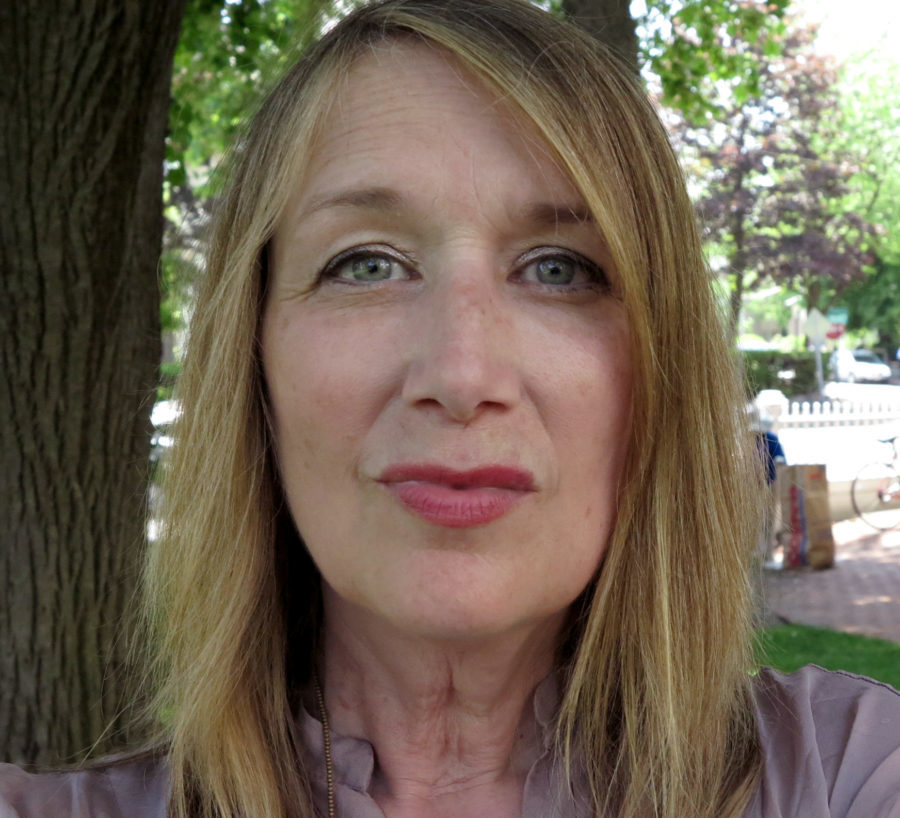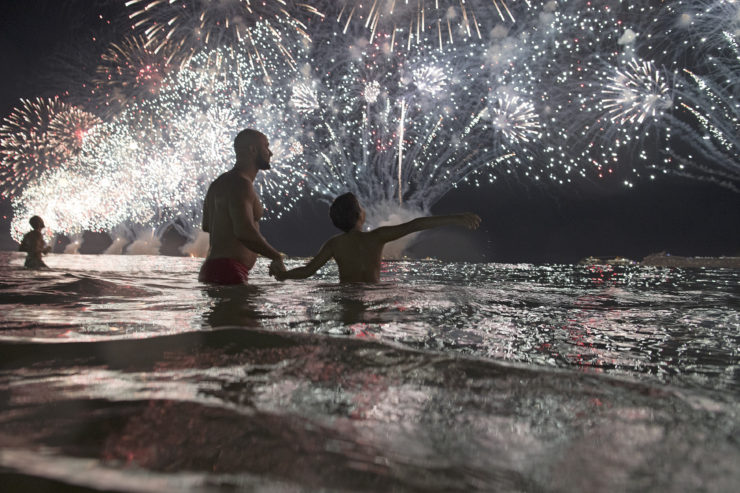
People watch the fireworks exploding over Copacabana beach during New Year's celebrations in Rio de Janeiro.
Friends sometimes tell me to take off my rose-colored spectacles, but I was determined to start out 2018 with a bit of inspiration on Storyboard — from some of our top literary journalists, and some of the narrative conferences and workshops on tap this year. As Pamela Colloff says in the post below: “Good storytelling makes us take notice, think deeply, care, and maybe even take action.”
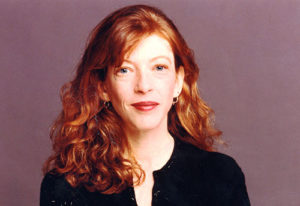 Some legends of longform on what we need to read next. I can’t think of a better post to start the year with. Longreads’ audience development editor, Catherine Cusick, reached out to some of the top literary journalists out there and asked them why they think narrative matters, what inspires them in grim times, and what stories they want to see this year. Look at this list: Susan Orlean, Pamela Colloff, Megan Garber, Peter Vigneron, Melissa del Bosque and Joshua Davis. Here’s what Orlean had to say: “I truly believe writing the stories we write is important, vital, meaningful and often urgent. That’s what stokes my fires when the world is too much with me.” But read all of their thoughts and be inspired.
Some legends of longform on what we need to read next. I can’t think of a better post to start the year with. Longreads’ audience development editor, Catherine Cusick, reached out to some of the top literary journalists out there and asked them why they think narrative matters, what inspires them in grim times, and what stories they want to see this year. Look at this list: Susan Orlean, Pamela Colloff, Megan Garber, Peter Vigneron, Melissa del Bosque and Joshua Davis. Here’s what Orlean had to say: “I truly believe writing the stories we write is important, vital, meaningful and often urgent. That’s what stokes my fires when the world is too much with me.” But read all of their thoughts and be inspired.
The soundtrack: “Inspiration Information,” by Shuggie Otis. It was cool to see Otis being rediscovered by a new generation of music fans a few years back. Listen to this album of the same name and groove and be happy. Talk about a great way to start out the New Year.
One Great Sentence
“For last year’s words belong to last year’s language, and next year’s words await another voice.”
T.S. Eliot, “Little Gidding.” Read why we think it’s great.
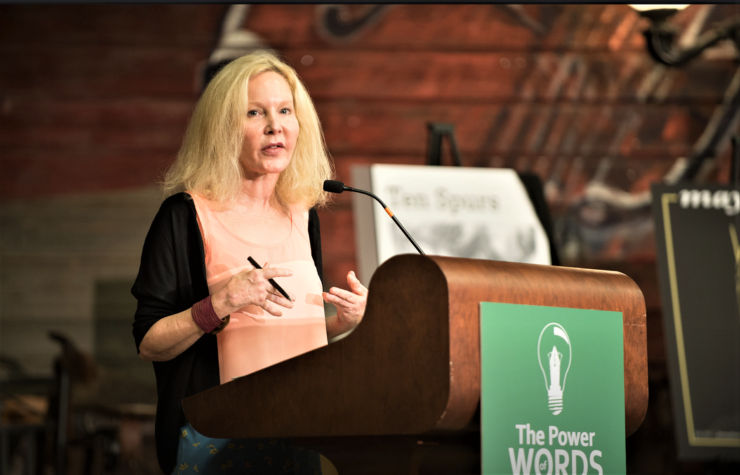
Katherine Boo speaks at last year's Mayborn Literary Nonfiction Conference in Texas.
Start 2018 out right with some literary journalism conferences and workshops. Want to hone your skills? Or maybe just be inspired by some of your heroes? Here’s a list of some of this year’s literary journalism gatherings. I like that our hometown Power of Narrative conference at Boston University seems to be focusing on women writers this year. The speakers include author Roxane Gay, Huffington Post editor Lydia Polgreen, Boston Globe Spotlight reporter Sacha Pfeiffer and The New York Times’ Emily Steel. And I also like this from the River Teeth Nonfiction Conference, put on by the nonfiction narrative journal River Teeth, which is “dedicated to the simple premise that good writing counts and that facts matter.”
The soundtrack: “Come Together,” by The Beatles. Oh, that bassline-percussion beginning! Sinister and hypnotic and irresistible. I understand that this was released as the B-side to “Something,” a very different type of song. Interesting that that single was Harrison (on the A) and very much Lennon (on the B). McCartney on the sidelines.
What I’m reading online: I decided to read a few offbeat stories to keep on a cheery path for a few days, at least. And I stumbled into a strange carnival zone, totally by chance.
Barnum & Bailey’s Forgotten High-Flying Suffragists, by Kat Vecchio. This piece in Narratively really belongs in the “who knew?” category. It’s a profile of circus performer and horsewoman Josephine DeMott Robinson, who fought for women’s rights. Here’s a great quote from her: “I could ride Comet and make him stand up straight in the air, while I waved a suffrage banner with a firm hand and a high arm.”
Clown School, by Nuar Alsadir. I expected this piece in Granta to be your typical jokey story about “my life as a clown” (cue that uneasy mix of laughter and horror). But Alsadir, a psychoanalyst, went to clown school to research a book about laughter, and the story has unexpected depth and psychological revelation. She writes, “Both psychoanalysis and the art of clowning – though in radically different ways – create a path towards the unconscious, making it easier to access the unsocialized self, or, in Nietzsche’s terms, to ‘become the one you are.’”
Gandini’s Circus, Atlas Obscura. This post on a favorite website is mostly a photo essay of the haunting remains of an old circus in Oklahoma. It’s like the famous lyrics come to life: “the tears of a clown/when there’s no one around.”
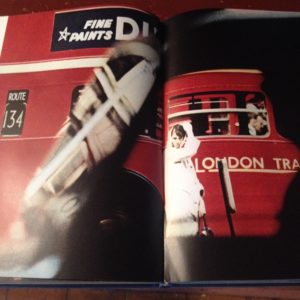 What’s on my bedside table: “London, city of any dream,” by photographer Erwin Fieger, with essay by Colin MacInnes. I came across this great find at my local used bookstore. Of a coffee-table size, it came out in the early 1960s, when it must have been quite edgy. The photographs have a very modern sensibility, things off-kilter, in focus and out of focus, capturing London on the cusp of change. But the book is worth it for MacInnes’ several-thousand-word essay alone. MacInnes, author of the great “Absolute Beginners,” wraps his memories of the London he grew up in with the London of the early ’60s. Marvelous. (As is the title, which makes me swoon with its lyricism.)
What’s on my bedside table: “London, city of any dream,” by photographer Erwin Fieger, with essay by Colin MacInnes. I came across this great find at my local used bookstore. Of a coffee-table size, it came out in the early 1960s, when it must have been quite edgy. The photographs have a very modern sensibility, things off-kilter, in focus and out of focus, capturing London on the cusp of change. But the book is worth it for MacInnes’ several-thousand-word essay alone. MacInnes, author of the great “Absolute Beginners,” wraps his memories of the London he grew up in with the London of the early ’60s. Marvelous. (As is the title, which makes me swoon with its lyricism.)
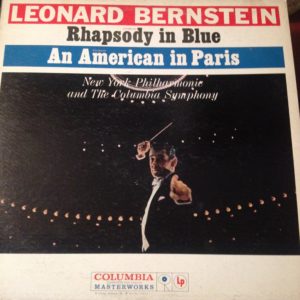 What’s on my turntable: “Gershwin: Rhapsody in Blue and An American in Paris,” Leonard Bernstein. Going with an international theme with the books and vinyl. Here, the sublime “An American in Paris.” Although it’s hard to get more American-genius than the Gershwins (or Leonard Bernstein, for that matter). And the liner notes say this performance at Carnegie Hall by the New York Philharmonic was titled, “What Is American Music?” Bernstein answered it by saying, “There are as many sides to American music as there are to the American people — our great, varied, many-sided democracy. And perhaps that’s the main quality of all — the many sidedness.”
What’s on my turntable: “Gershwin: Rhapsody in Blue and An American in Paris,” Leonard Bernstein. Going with an international theme with the books and vinyl. Here, the sublime “An American in Paris.” Although it’s hard to get more American-genius than the Gershwins (or Leonard Bernstein, for that matter). And the liner notes say this performance at Carnegie Hall by the New York Philharmonic was titled, “What Is American Music?” Bernstein answered it by saying, “There are as many sides to American music as there are to the American people — our great, varied, many-sided democracy. And perhaps that’s the main quality of all — the many sidedness.”
If you want to chat about storytelling (or music), I’m Storyboard editor Kari Howard, and you can reach me at editor@niemanstoryboard.org. Or you can find me at @karihow on Twitter.


